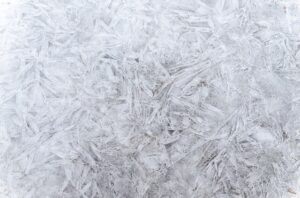 You may be neglecting it right now, but you must make sure to give it some extra attention to your crawl space during winters and throughout. Admittedly, this is among the most vulnerable areas of the house; it is more exposed to the outdoors, less protected, and typically more prone to infestation than all the other portions of the house. It is therefore critical to take precautions to safeguard your crawl space during winters.
You may be neglecting it right now, but you must make sure to give it some extra attention to your crawl space during winters and throughout. Admittedly, this is among the most vulnerable areas of the house; it is more exposed to the outdoors, less protected, and typically more prone to infestation than all the other portions of the house. It is therefore critical to take precautions to safeguard your crawl space during winters.
Risks of Having Ice in Crawl Space
Although many residents are conscious of the hazards that moisture in your crawl space may bring, very few of us realize the importance of preventing ice in crawl spaces since snow and ice can be just as dangerous, if not worse.
Then again, moisture and ice are inextricably related! When winter arrives in the United States, it can be brutal. All water that penetrates into the crawl space or puddles around the house may and does freeze firmly, placing strain on your home’s foundation and compounding existing problems.
These challenges, in turn, may lead to even more complications, particularly when the warm spell arrives. For example, If you already have cracks in the roof or walls, ice in the crawl space might widen them, allowing more water to enter during the spring season and eventually leading to water damage in the crawl space.
This problem will indeed worsen season after season, so if you see some of those symptoms, you should pay special attention and contact a home restoration professional, such as 911 Restoration, to determine whether your home requires repairs.
Tips on Preventing Ice in Crawl Space
Proper maintenance of the crawl space during winter should not really have to be a difficult effort; even basic steps may significantly impact the protection of your home. These four actions will go a long way towards preventing ice in the crawl space and keeping it clean.
1. Clean Your Gutters and Drainage System
Clear up your drains and ground-level sewer lines for a few hours. The easiest approach to avoid ice development is to keep the water all across your crawl space to a minimum. So, before winter arrives, clear out the dirt and silt from your gutter and drainage systems and clean them as much as you can.
You can try using a water hose to clean it properly. Of course, just cleaning them will not help in preventing ice in the crawl space, but it will keep them in fine running condition whenever the snow or ice melts.
2. Opt For Grading Your Yard
Landscaping pros can provide you with properly leveling your yard, which will benefit you by angling the water in another direction and keeping it away from your house. This will also help increase drainage and decrease water accumulation. What you can do on your own is investigate the best mix of shrubs and plants for draining and moisture control. This will help reduce the danger of soil movement and erosion.
3. Keep Up With Sump Pump Repairs and Maintenance
The sump pump is among the most often utilized items in your house, particularly during the winter and autumn months when the country may be quite wet and rainy. If you schedule a sump pump service, you can be assured that it will not disappoint you at the possible disastrous moment. Nevertheless, you should inspect your sump pump output line frequently to ensure it doesn’t freeze.
4. Keep the Space Around Your House Clean
When there is snowfall, add your home’s perimeter to the typical shoveling path. Clear the pathway around your house, allowing at least a half-foot of space between the piled snow and the edge of your house.
This would not only reduce the amount of hard ice that forms on your perimeter fence but will also channel the bulk of melted snow away from it. This will reduce the amount of water that seeps into the crawl space and refreezes, resulting in a healthier environment in the crawl space.
5. Seal All the Cracks Around Your House
When fractures appear in crawl spaces, they allow water to infiltrate. As a result, these fissures constitute one of the primary causes of water and eventually ice in crawl space. Walk through your crawl space, looking for cracks and identifying areas that may weaken over time. If you discover any flaws, use sealants to patch them.
6. Cover All the Vents That May Lead To Your Crawl Space
Older houses usually have crawl space vents in their structures. They seem to be the most susceptible areas in the crawl space; if moisture from rain, snow, garbage, or vermin enters your crawl space, they will do so through these vents.
This is why we recommend covering all the vents if you have any before the winter season arrives. This will protect your house and maintain its value in the market throughout the seasons.
All the tips mentioned above will help you greatly in preventing ice in the crawl space, which may lead to water damage. Remember that knowing your house really well and keeping up with its maintenance is the only way to prevent it from any damage or high restoration costs.

